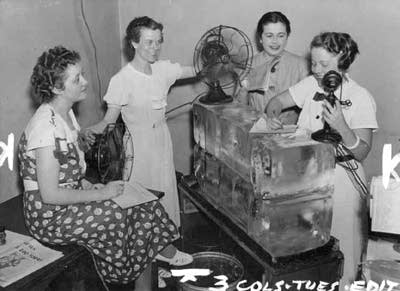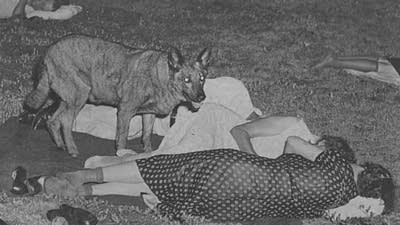Photos: A look back at the relentless heat wave of July 1936

Go Deeper.
Create an account or log in to save stories.
Like this?
Thanks for liking this story! We have added it to a list of your favorite stories.
This week marks the 80th anniversary of the start of Minnesota's worst heat wave.
It began July 4, 1936, in southern Minnesota and spread north over the next 12 to 15 days, according to University of Minnesota climatologist Mark Seeley. Temperatures soared over 100 degrees across the region for days on end.
Over at the Star Tribune, meteorologist D.J. Kayser noted this week:
Turn Up Your Support
MPR News helps you turn down the noise and build shared understanding. Turn up your support for this public resource and keep trusted journalism accessible to all.
This heat wave brought the warmest high ever record in the Twin Cities — 108 degrees on July 14th.
Not only was the warmest temperature on record at the Twin Cities recorded during this stretch, but at St. Cloud (107 on the 13th which is also tied with two days from 1934), Duluth (106 on the 13th), and Rochester (108 on the 14th) as well.
The warmest Minnesota temperature on record was also tied in this heat wave, when it reached 114 on July 6th, 1936 in Moorhead.
It was so bad that many people chose to sleep outside.
It wasn't much better elsewhere across the country — the July 1936 heat wave killed an estimated 900 people in Minnesota and about 5,000 nationwide.
The timing of the heat wave came at one of the worst moments, too: The country was in the midst of the Great Depression and was also suffering from severe drought.
University of Minnesota climatologist Mark Seeley joined Tom Weber Wednesday to discuss the Great Heat Wave of 1936. Listen to that discussion at the link above.
Dear reader,
Political debates with family or friends can get heated. But what if there was a way to handle them better?
You can learn how to have civil political conversations with our new e-book!
Download our free e-book, Talking Sense: Have Hard Political Conversations, Better, and learn how to talk without the tension.






